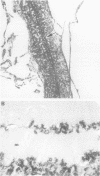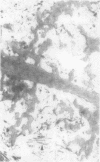Abstract
A 47 year old man presented with a two year history of increasing cervical dysphagia, dyspnoea, and cutaneous signs. He had been diagnosed 27 years previously with Wilson's disease and was treated with penicillamine (1.5 g daily). Systemic abnormality of elastic fibres was confirmed by light and electron microscopy following biopsy of skin, lung, oesophageal muscle, gum, pharyngeal tissue, and cervical connective tissue. Dysphagia was relieved by cricopharyngeal myotomy. Substitution of trientene dihydrochloride for penicillamine relieved cutaneous and systemic manifestations. This is possibly the first case demonstrating an association between prolonged penicillamine use and biopsy proved systemic pseudo-pseudoxanthoma elasticum. The presenting symptoms may have resulted from the abnormal numbers and properties of elastic fibres, and the changes were caused by penicillamine use, rather than by idiopathic, inherited pseudoxanthoma elasticum.
Full text
PDF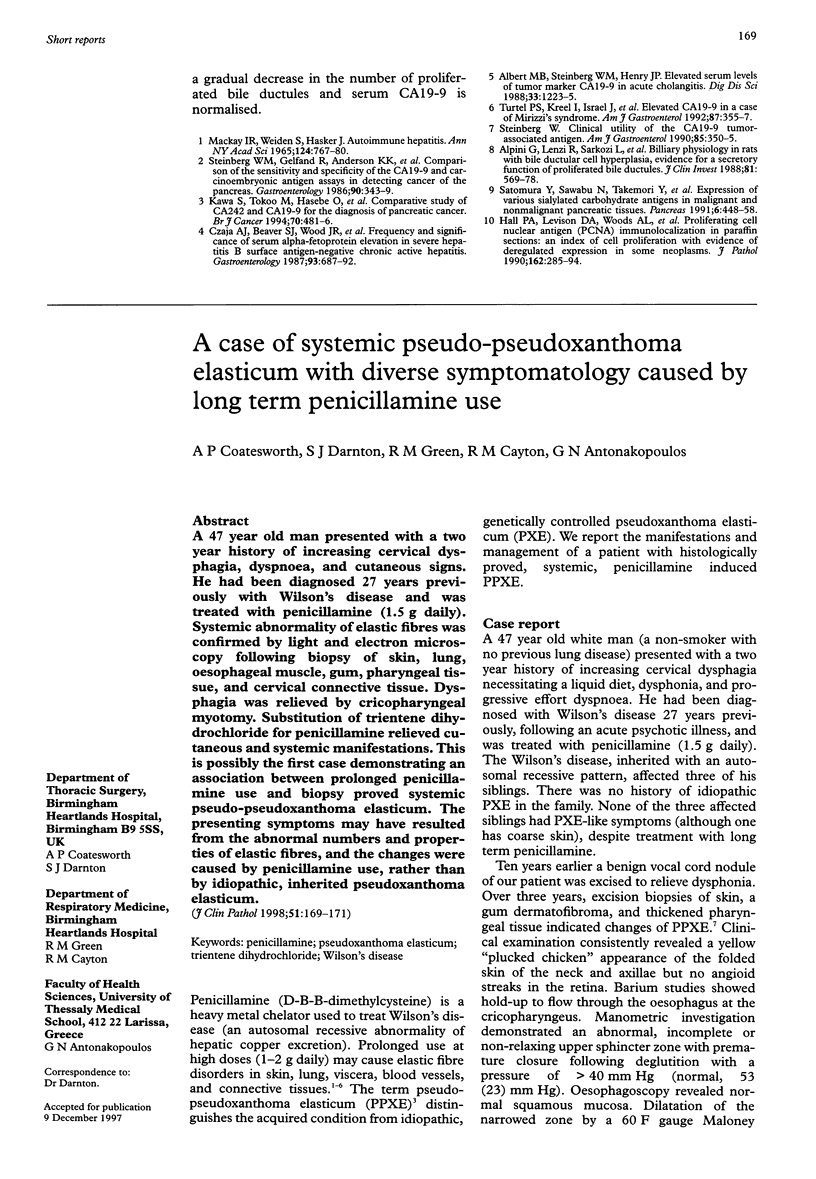
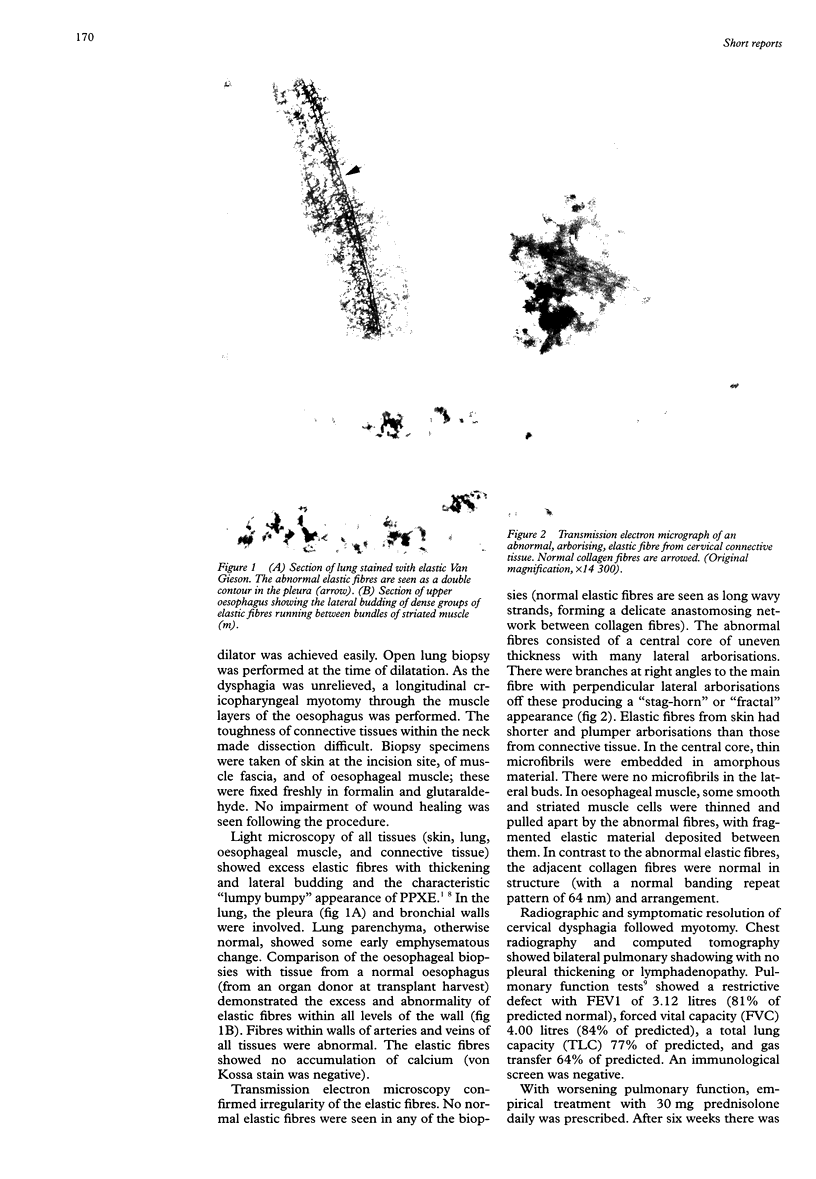
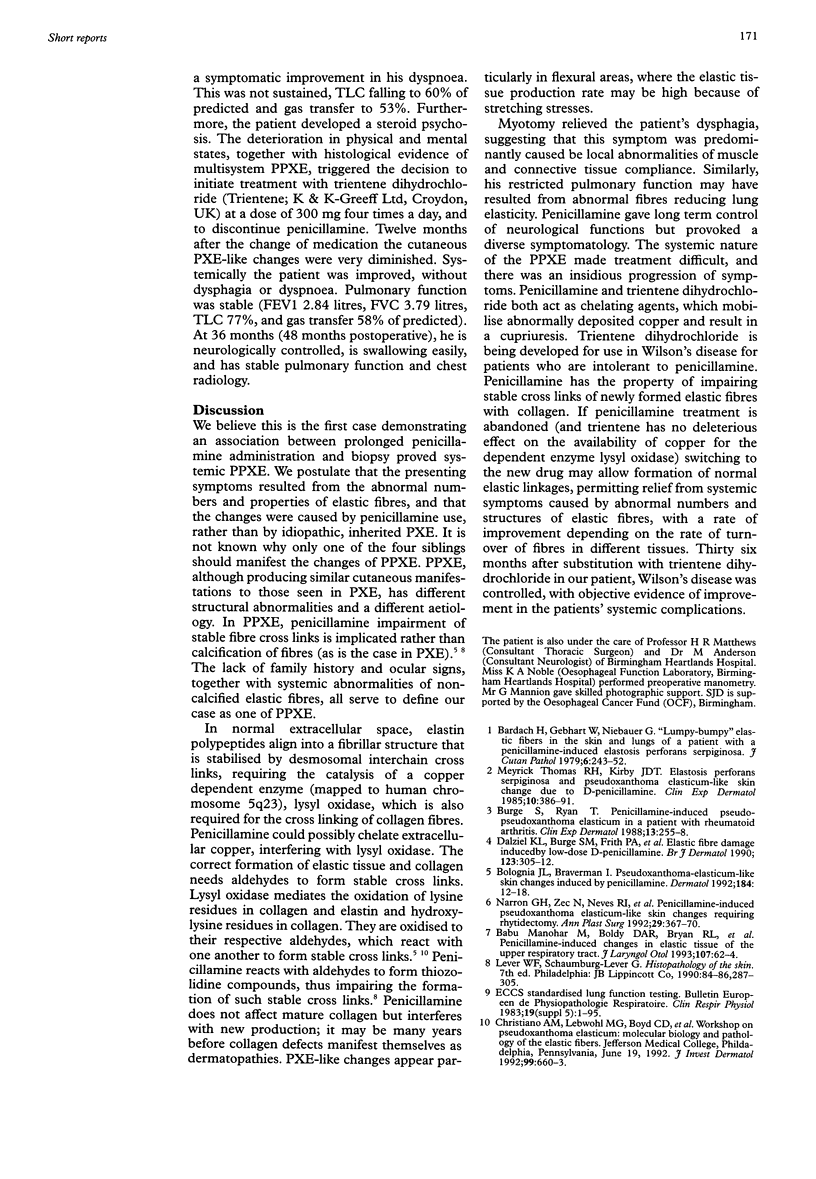
Images in this article
Selected References
These references are in PubMed. This may not be the complete list of references from this article.
- Bardach H., Gebhart W., Niebauer G. "Lumpy-bumpy" elastic fibers in the skin and lungs of a patient with a penicillamine-induced elastosis perforans serpiginosa. J Cutan Pathol. 1979 Aug;6(4):243–252. doi: 10.1111/j.1600-0560.1979.tb01131.x. [DOI] [PubMed] [Google Scholar]
- Bolognia J. L., Braverman I. Pseudoxanthoma-elasticum-like skin changes induced by penicillamine. Dermatology. 1992;184(1):12–18. doi: 10.1159/000247491. [DOI] [PubMed] [Google Scholar]
- Burge S., Ryan T. Penicillamine-induced pseudo-pseudoxanthoma elasticum in a patient with rheumatoid arthritis. Clin Exp Dermatol. 1988 Jul;13(4):255–258. doi: 10.1111/j.1365-2230.1988.tb00693.x. [DOI] [PubMed] [Google Scholar]
- Christiano A. M., Lebwohl M. G., Boyd C. D., Uitto J. Workshop on pseudoxanthoma elasticum: molecular biology and pathology of the elastic fibers. Jefferson Medical College, Philadelphia, Pennsylvania, June 10, 1992. J Invest Dermatol. 1992 Nov;99(5):660–663. doi: 10.1111/1523-1747.ep12668156. [DOI] [PubMed] [Google Scholar]
- Dalziel K. L., Burge S. M., Frith P. A., Ryan T. J., Mowat A. Elastic fibre damage induced by low-dose D-penicillamine. Br J Dermatol. 1990 Sep;123(3):305–312. doi: 10.1111/j.1365-2133.1990.tb06289.x. [DOI] [PubMed] [Google Scholar]
- Manohar M. B., Boldy D. A., Bryan R. L., Pearman K. Penicillamine-induced changes in elastic tissue of the upper respiratory tract. J Laryngol Otol. 1993 Jan;107(1):62–64. doi: 10.1017/s0022215100122170. [DOI] [PubMed] [Google Scholar]
- Meyrick Thomas R. H., Kirby J. D. Elastosis perforans serpiginosa and pseudoxanthoma elasticum-like skin change due to D-penicillamine. Clin Exp Dermatol. 1985 Jul;10(4):386–391. doi: 10.1111/j.1365-2230.1985.tb00588.x. [DOI] [PubMed] [Google Scholar]
- Narron G. H., Zec N., Neves R. I., Manders E. K., Sexton F. M., Jr Penicillamine-induced pseudoxanthoma elasticum-like skin changes requiring rhytidectomy. Ann Plast Surg. 1992 Oct;29(4):367–370. doi: 10.1097/00000637-199210000-00016. [DOI] [PubMed] [Google Scholar]



